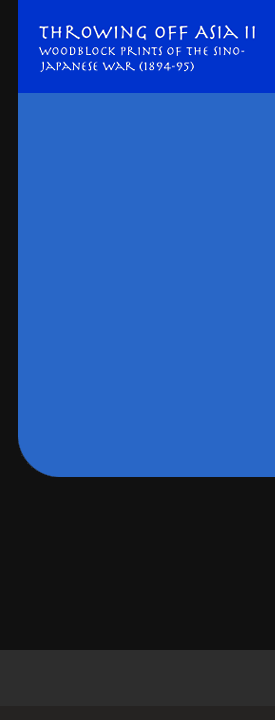

The Compassionate Hero: Captain Higuchi
One of the most celebrated Japanese heroes of the Sino-Japanese War was Captain Higuchi, who reportedly rescued a Chinese infant in a crucial battle near Weihaiwei. As the story was told, Captain Higuchi heard the abandoned child crying on the battlefield, scooped him up in his left arm, and led his forces to victory flourishing his sword with his right arm. After the battle, Higuchi returned the child to his parents.
Captain Higuchi became a symbol of the bravery and benevolence of the Japanese forces and, as seen here, was celebrated in a number of woodblock prints (often with enemy bullets streaking around him). At a deeper symbolic level, he exemplified the whole notion of a righteous war against China. The implication was that the child had been left in peril by its own irresponsible parents and caretakers. Thus, even as they were depicted overthrowing the Chinese, the propaganda message of such prints to Japanese viewers was that their fighting men not only were strong and resolute, but also were protecting and preserving China’s future.
The “benevolent conqueror” is a familiar conceit in war propaganda in general.






